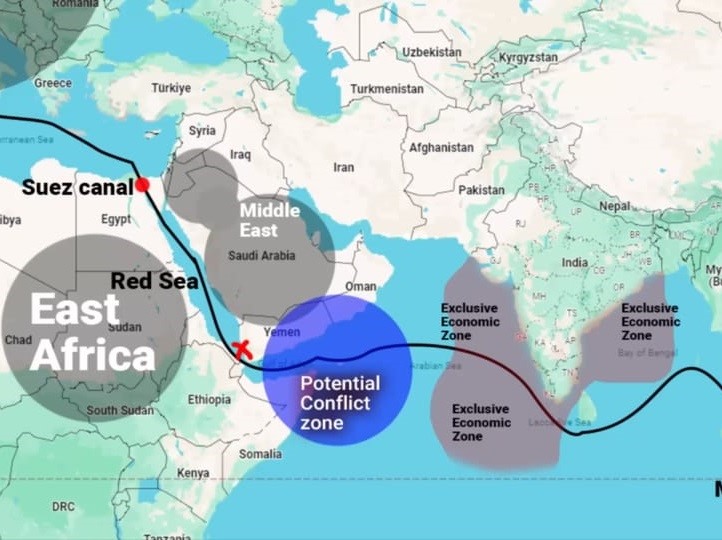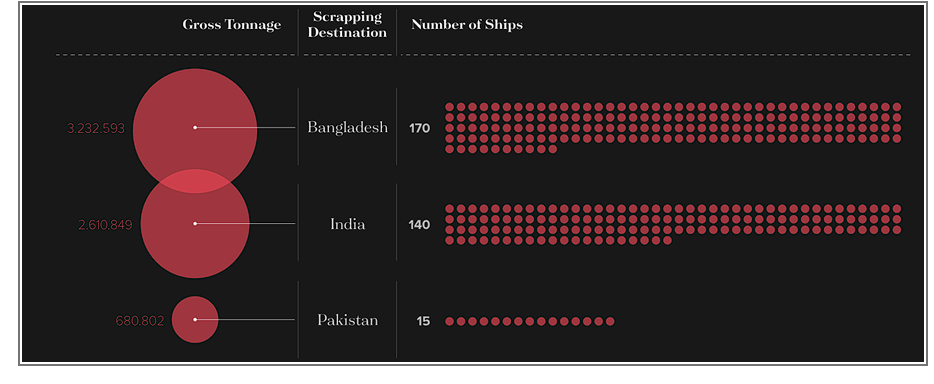Container Seal Types Explained: Choose the Right Security Solution for Shipping

Container seals are vital to protect billions of dollars worth of cargo that moves across global oceans. These security devices act as primary defense against theft and tampering during transit, whether you’re shipping Full Container Load (FCL) or Less than Container Load (LCL).
The right shipping container seal delivers more value than just cargo security – it documents proof of protection throughout the trip. Each container seal lock’s unique identification number must match the Bill of Lading to ensure compliance with international standards like ISO PAS 17712. The selection process can be complex because different countries have specific requirements and varying security needs.
This piece will show you the available container seal types and help you pick the perfect security solution. You’ll learn proper installation methods and verification steps to keep your shipments protected effectively.
Types of Container Seals Available Today
When it comes to securing cargo in transit, choosing the right seal is crucial for both security and regulatory compliance. Different types of container seals offer varying levels of protection, durability, and functionality, depending on the specific shipping requirements. Businesses looking for reliable sealing solutions often explore a range of industrial security options, including mechanical seal technologies that provide advanced protection against tampering and leaks.
Some are designed for high-security applications, while others prioritize flexibility or real-time tracking. Understanding these options can help businesses make informed decisions that safeguard their shipments from tampering, theft, and unauthorized access.
Bolt Seals: High-Security Standards
Bolt seals are the toughest container security solution you can buy commercially. A metal pin and steel barrel make up these seals, and each part carries its own unique ID number. The inner rod gets a zinc electroplating treatment to fight rust, and the lock head stays resistant to oxidation. The colorful plastic shell is made from eco-friendly ABS materials and shows an “H” mark to show its High Security rating.
Premium bolt seals come with a smart anti-rotation system that stops anyone from removing them by spinning them really fast. You need heavy-duty tools like bolt cutters or powerful reciprocating saws to remove these seals. Modern manufacturers now make oval or hexagon-shaped designs to protect against drill attacks.
Cable Seals for Flexible Security
Cable seals work great as a versatile option, especially when you have odd shapes or sizes to secure. These seals let you adjust their length from 6 to 72 inches, and the cable thickness ranges from 1.5mm to 5.0mm. Steel wire construction with multiple braided strands gives these seals a breaking strength of 1,900 kg.
The security features are clever – the wires fray if someone tries to cut them, so nobody can put them back together. This tamper-proof design and flexibility make cable seals perfect to secure valves, gates, and hatches.
Electronic Seals with GPS Tracking
E-seals show just how advanced container security has become. These smart devices combine physical security with electronic monitoring. The HB-A1Q model works great for customs surveillance and uses both GPS and Beidou systems to track location precisely. A single USB charge keeps these seals running for up to 10 days.
These smart seals track everything – when cargo gets accessed, opened, closed, or tampered with. They log the device ID and timestamp too. The system sends alerts right away if someone breaches security, so teams can respond quickly. The seals also work with different magnetic sizes and chain dimensions to fit various sealing needs.
Each type of seal serves its own purpose. Bolt seals shine in high-security situations. Cable seals adapt well to unusual shapes. E-seals give you real-time monitoring. Your choice depends on your security needs, container design, and whether you need tracking.
Choosing the Right Shipping Container Seal
Selecting the right seal for a shipping container involves more than just picking a random security device. It requires a careful assessment of various factors, including the level of protection needed, potential risks along the shipping route, and cost considerations. Striking the right balance between security and budget ensures that shipments remain safe while avoiding unnecessary expenses.
Security Level Requirements
The first thing to look at is your shipment’s value and sensitivity. High-value products, perishable food, and pharmaceuticals just need strong security measures. These shipments should have high-security seals that meet ISO/PAS 17712 standards.
Some regions pose bigger security risks through piracy or theft during international shipping. Bolt seals or cable seals work best here because they can only be removed with specialized tools like bolt cutters. Each seal must show its security grade – “H” for high security, “S” for security, and “I” for indicative.
Your shipping route’s environmental conditions affect seal choice too. Seals face challenges from corrosive conditions, high humidity, and extreme temperatures. You’ll want seals that can handle these specific environmental factors to keep your cargo safe during transit.
Cost vs Protection Analysis
While cost matters, you’ll need to balance security needs with your budget smartly. Simple indicative seals like plastic or metal strip variants work fine for low-risk shipments. Notwithstanding that, high-security seals prove more affordable for valuable cargo despite their higher upfront costs.
Look at potential theft or damage losses against security measure costs. High-security seals cost more but protect valuable shipments where loss risks outweigh extra security investment.
You can boost protection without spending too much by using a layered security approach. Try combining different seal types – maybe an inner wall brace near container doors with a figure-8 security cable that stays out of reach. These combinations improve security without raising costs by a lot.
Good documentation is a great way to get cost-effective security. Your seal’s unique identification number must match the Bill of Lading, as mismatches can lead to big fines and delays. Keeping accurate records becomes just as vital as physical security measures.
Container Seal Lock Installation Guide
Properly installing a container seal is a crucial step in securing shipments and ensuring compliance with transportation regulations. A well-installed seal helps prevent tampering, theft, and unauthorized access while maintaining the integrity of the cargo throughout transit.
However, even minor mistakes in the installation process can compromise security and lead to costly delays. By following best practices and avoiding common errors, businesses can enhance the effectiveness of their container sealing procedures and improve overall supply chain security.
Step-by-Step Installation Process
You should close the container doors in the right order – left door first, then the right door. Next, you need to participate in securing the vertical lock rods on both sides. The right door works best for seal placement since it’s the main access point.
Authorized staff must check if the unique serial numbers match on both the lock body and pin. The plastic connector between the barrel and pin needs to be broken to separate them.
When using bolt seals, put the pin through the designated hole in the lock rod catches. The cap should be pressed onto the metal end until you hear a click that confirms proper fitting. A witness must be present while you use the View, Verify, Twist, and Tug (VVTT) method to confirm the seal’s integrity.
Common Installation Errors to Avoid
People often make mistakes with seal tension. Too tight and you weaken the seal’s structure, too loose and it becomes vulnerable to tampering. Wrong seal numbers on transportation documents can get pricey and cause delays with potential fines.
Seal placement is another common mistake. You must place seals on either one or both right locking rods. Only staff members who completed seal security training should handle the installation.
The seals need regular checks throughout transit. You must notify CBP or relevant foreign authorities right away if seals appear compromised. A second seal must be applied with proper documentation if removal becomes necessary during transit.
Some shippers send time-stamped images of the closed seal to consignees to improve security. These images are a great way to get support for insurance claims and survey assessments when cargo gets lost or damaged. Keeping accurate records of seal numbers, application dates, and recipients ended up creating essential accountability and tracking.
Digital vs Physical Verification Methods
E-seals provide better verification through automatic data collection. These seals send container updates at checkpoints and give online access to location, tampering alerts, and timing details. The system records location-tagged temperature changes, impacts, and break-in attempts.
Physical checks need staff to use the View, Verify, Twist, and Tug (VVTT) method with someone watching. This check makes sure the seal number matches papers, isn’t broken, and stays properly attached. Staff must send written reports to partners and authorities right away if they spot tampering.
Bills of Lading and shipping manifests must show correct seal numbers. Electronic printing of these numbers prevents changes without permission. Receivers must get their seal numbers before shipments leave.
Taking digital photos when containers are packed proves seals were installed correctly. These photos should go to destination points electronically to check. If someone might have accessed the container without permission, staff need to take detailed photos of the seal, container, and cargo when opening.
Seal logs need updates when seals are given out to track how they’re used. Yearly audits check seal counts and keep records accurate. Used seals go in special bins and recycling companies collect them regularly to destroy them properly.
Careful checking and record-keeping helps maintain secure custody chains. This organized system helps spot security issues quickly, speeds up customs checks, and ended up protecting cargo during shipping.
Conclusion
Choosing the right container seal is more than just a security measure—it’s a crucial step in safeguarding cargo, ensuring compliance, and maintaining a smooth shipping process. Whether you opt for high-security bolt seals, adaptable cable seals, or advanced electronic seals, each option plays a role in protecting goods against tampering and theft.
Proper installation, verification, and documentation further reinforce security, preventing costly delays and losses. By understanding the available sealing solutions and following best practices, businesses can enhance supply chain integrity and ensure their shipments reach their destination safely and securely.
![]()
The post Container Seal Types Explained: Choose the Right Security Solution for Shipping appeared first on Container News.
Content Original Link:
" target="_blank">



























































